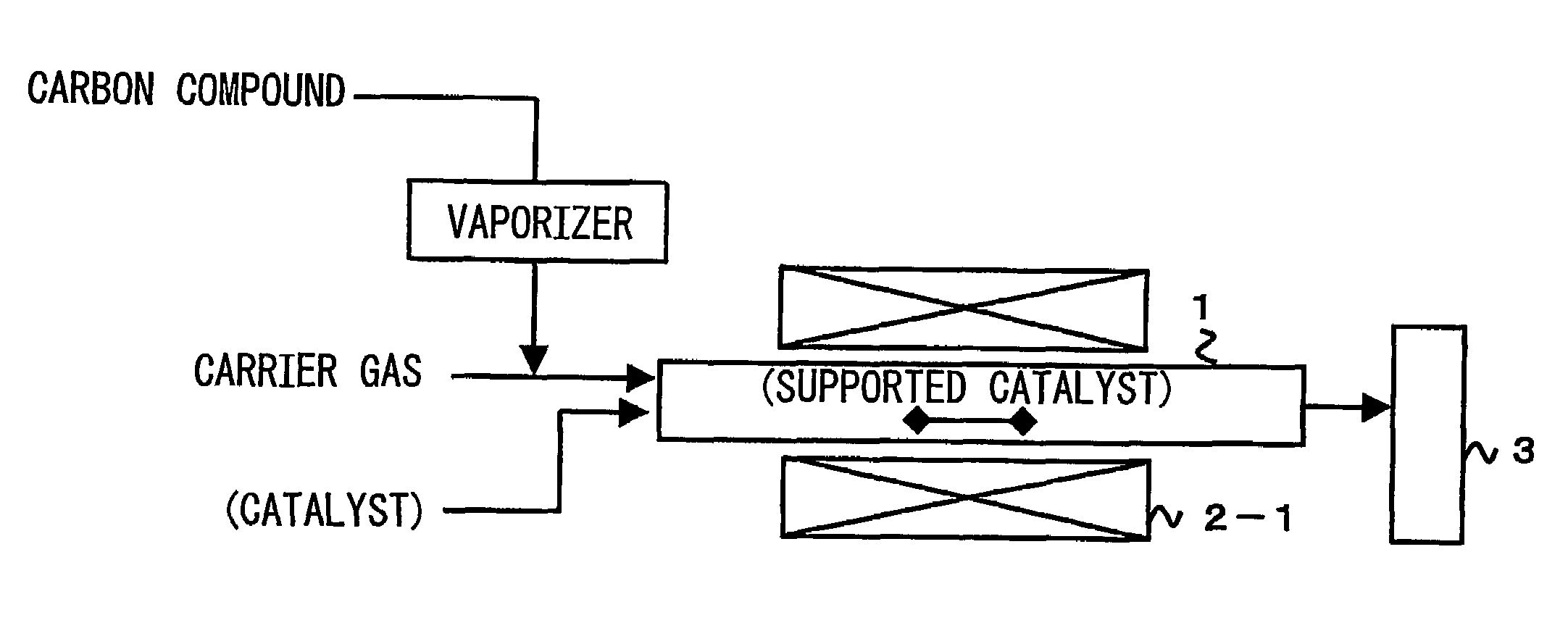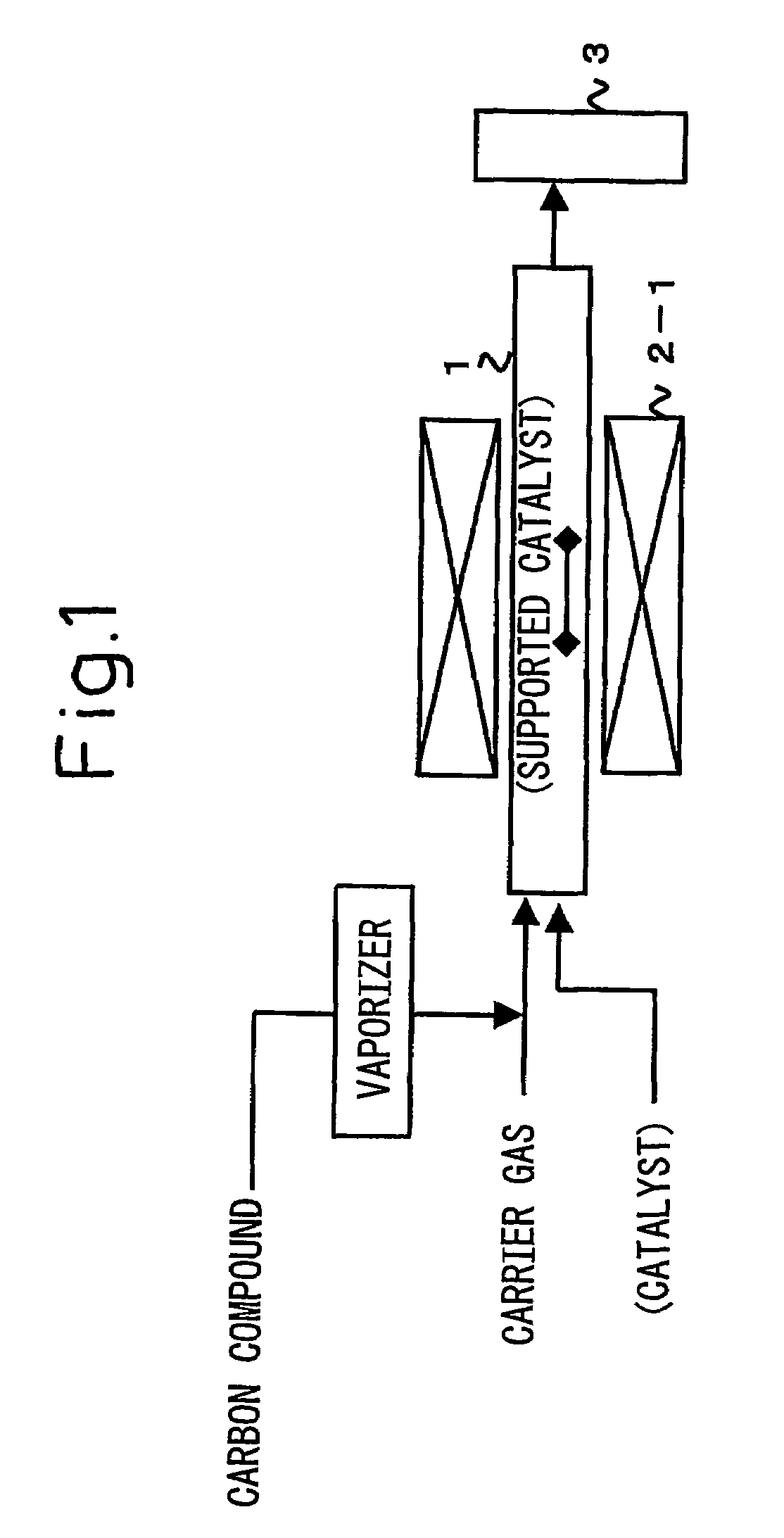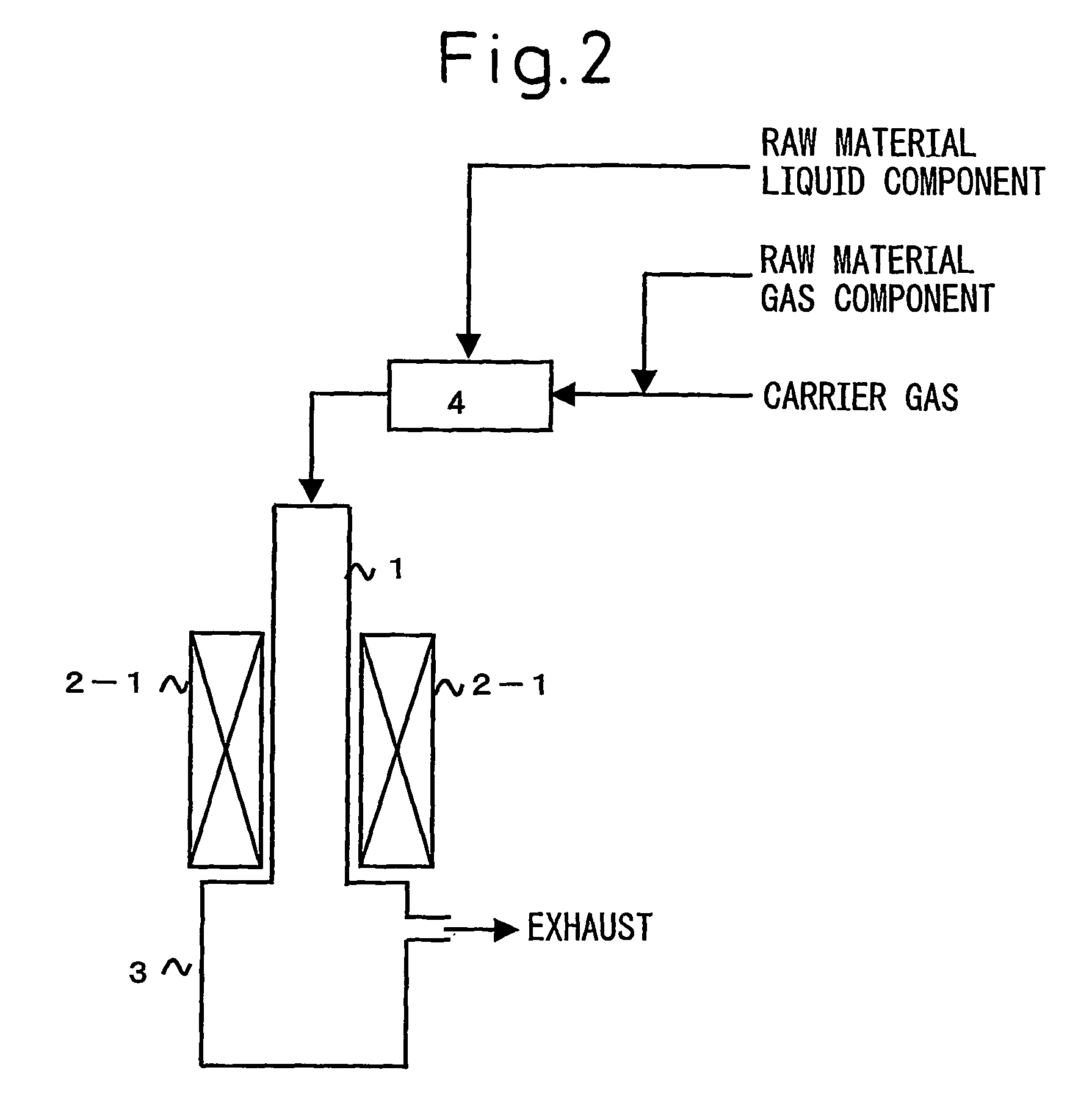Method of producing vapor-grown carbon fibers
a technology of carbon fiber and vapor growth, which is applied in the direction of carbonsing rags, material nanotechnology, textiles and papermaking, etc., can solve the problems of inability to obtain significant yield of carbon fiber and inability to produce good efficiency of carbon fiber, and achieves short reaction time, high yield, and high efficiency in effective use of catalyst or catalyst precursor
- Summary
- Abstract
- Description
- Claims
- Application Information
AI Technical Summary
Benefits of technology
Problems solved by technology
Method used
Image
Examples
example 1
[0118]In a vertical furnace equipped with a quartz reaction tube 1 (inside diameter: 31 mm, outside diameter: 36 mm, length of heating zone: about 400 mm) shown in FIG. 2, the temperature in the heating zone was elevated to 1,250° C. in an N2 gas stream and then, after stopping the feeding of N2, H2 as a carrier gas was instead passed at 1 NL / min into the reaction tube. When the temperature was stabilized, ethylene (a compound of Group (a)) was mixed in the gas state with H2. A solution obtained by dissolving and mixing benzene (a compound of Group (b)), ferrocene and thiophene was introduced by using a small pump into a vaporizer 4 heated to 200° C. for 10 minutes, to vaporize in an amount, of each component shown in Table 1, and the resulting gas was caused to accompany the mixed gas of H2 and ethylene. In this way, all compounds were fed in the gas state into the reaction tube.
[0119]As a result of the reaction, a gray-tinged cobweb-like deposit was produced...
example 2
[0120]The reaction was performed according to the method of Example 1 except for using methane in place of ethylene. The results are shown in Table 1. The product was a fibrous material having an average outside diameter of 150 nm and the carbon recovery was 35%.
example 3
a: Carbon Monoxide, b: Benzene
[0121]The reaction was performed according to the method of Example 1 except for using carbon monoxide in place of ethylene. The results are shown in Table 1. The product was a fibrous material having an average outside diameter of 150 nm and the carbon recovery was 34%.
PUM
| Property | Measurement | Unit |
|---|---|---|
| diameter | aaaaa | aaaaa |
| temperature | aaaaa | aaaaa |
| boiling point | aaaaa | aaaaa |
Abstract
Description
Claims
Application Information
 Login to View More
Login to View More - R&D
- Intellectual Property
- Life Sciences
- Materials
- Tech Scout
- Unparalleled Data Quality
- Higher Quality Content
- 60% Fewer Hallucinations
Browse by: Latest US Patents, China's latest patents, Technical Efficacy Thesaurus, Application Domain, Technology Topic, Popular Technical Reports.
© 2025 PatSnap. All rights reserved.Legal|Privacy policy|Modern Slavery Act Transparency Statement|Sitemap|About US| Contact US: help@patsnap.com



